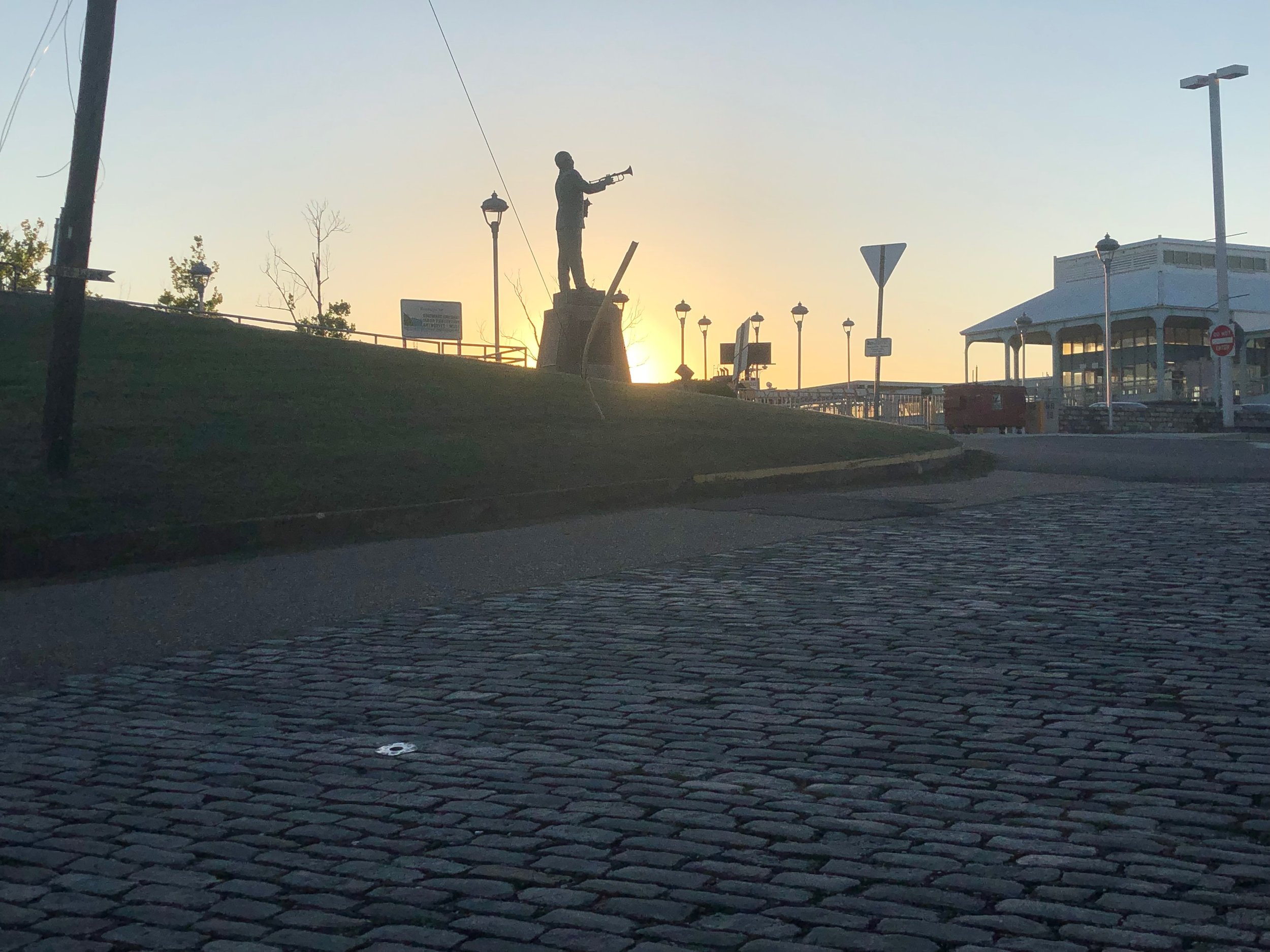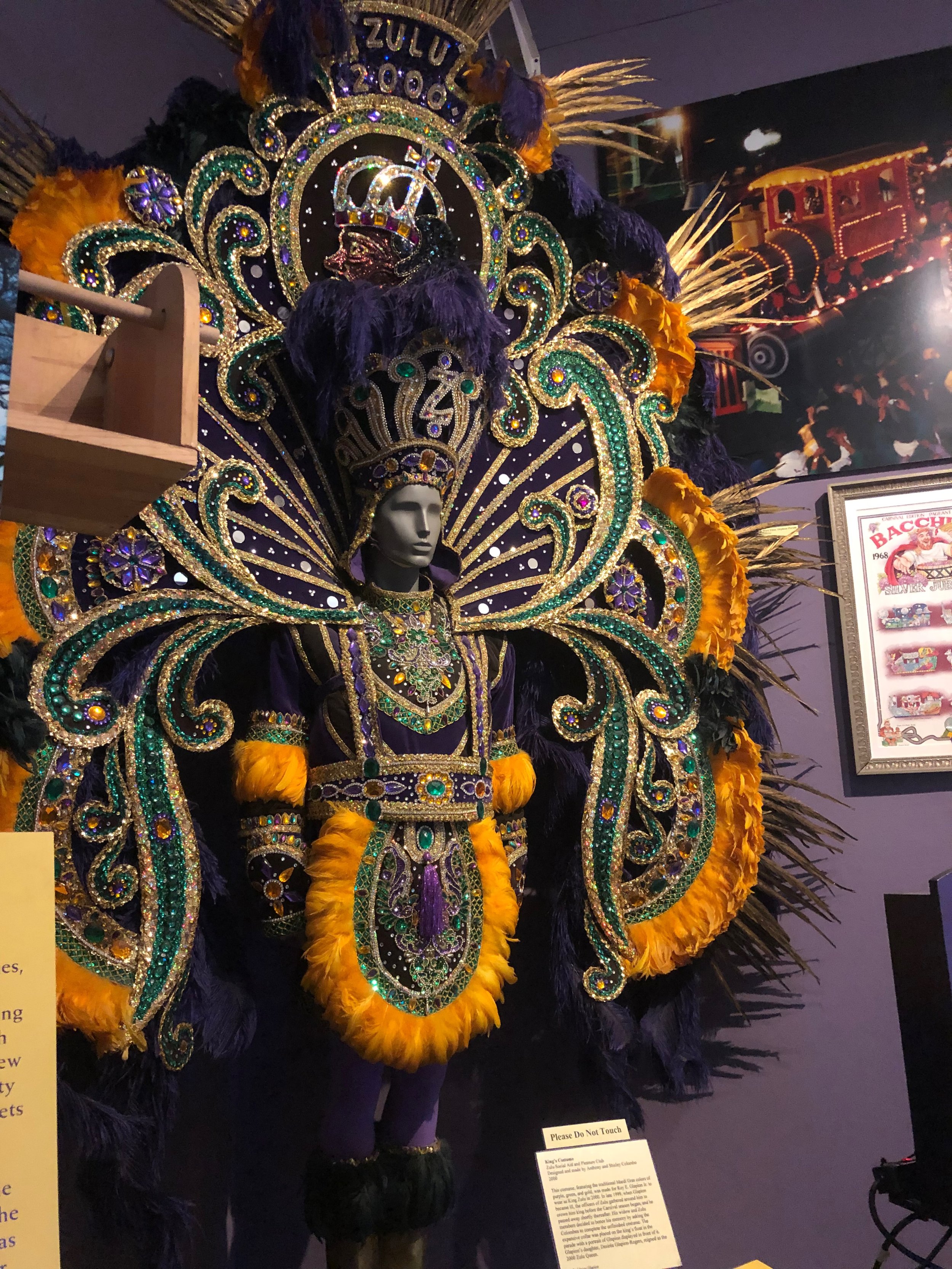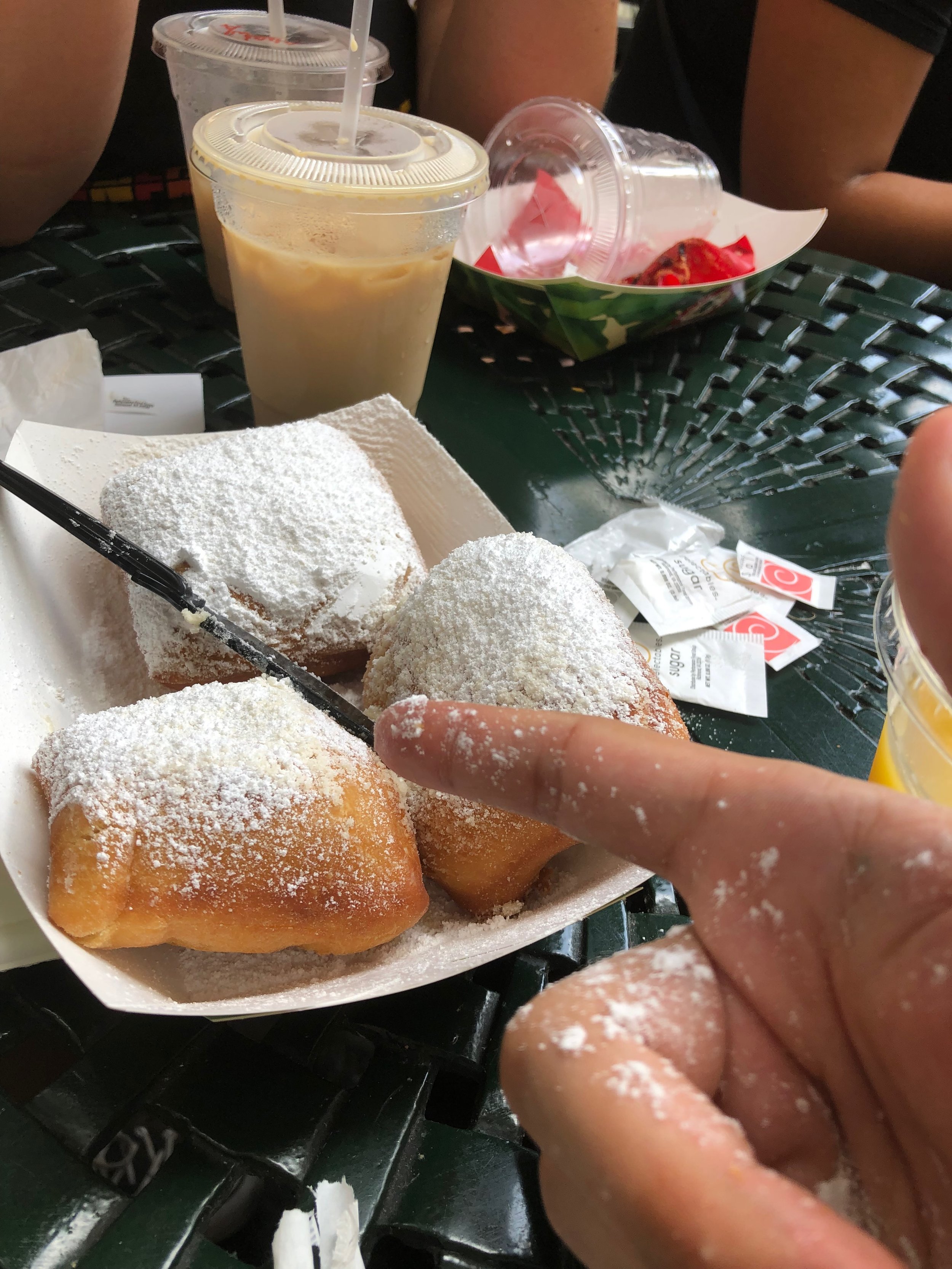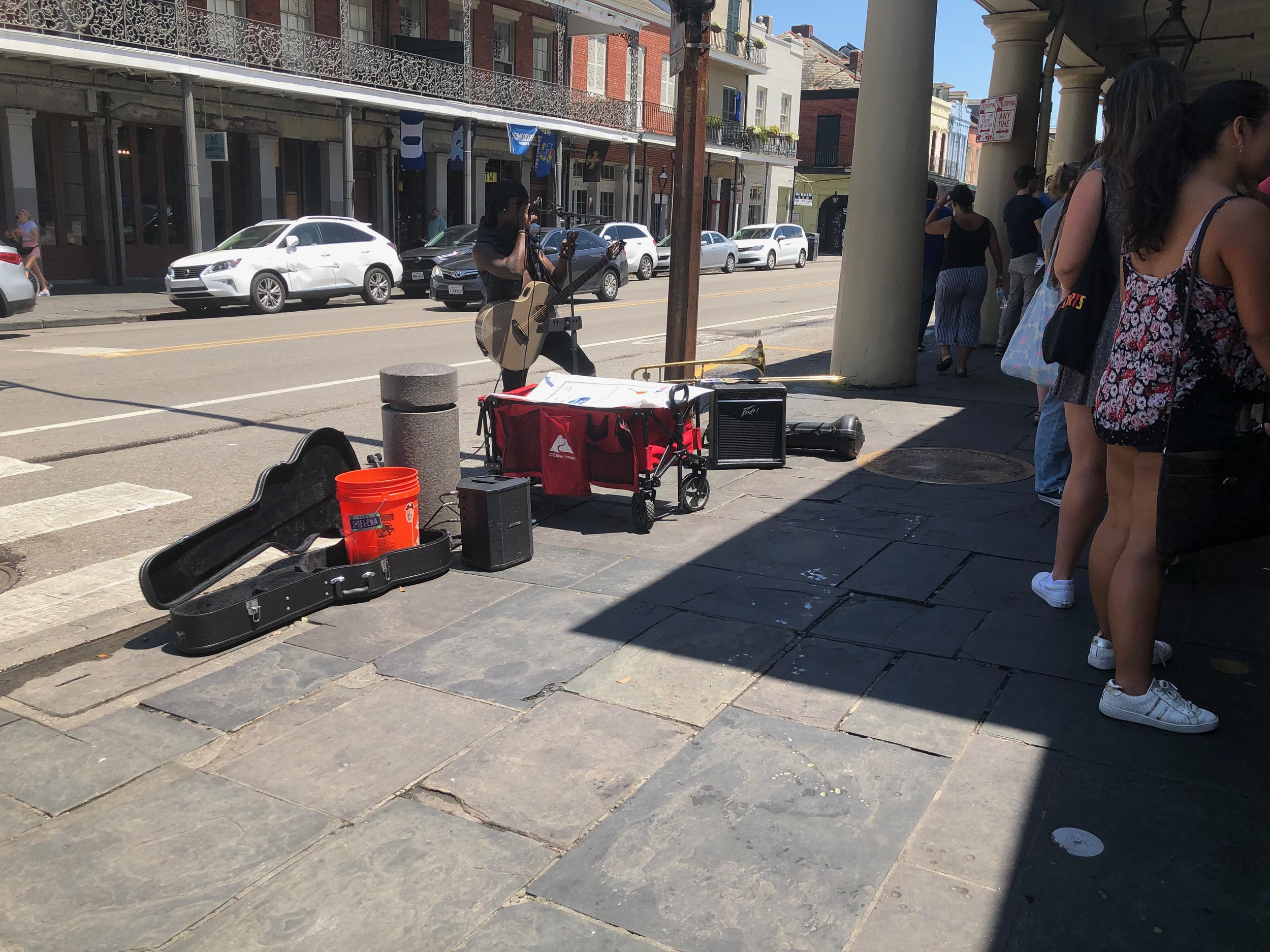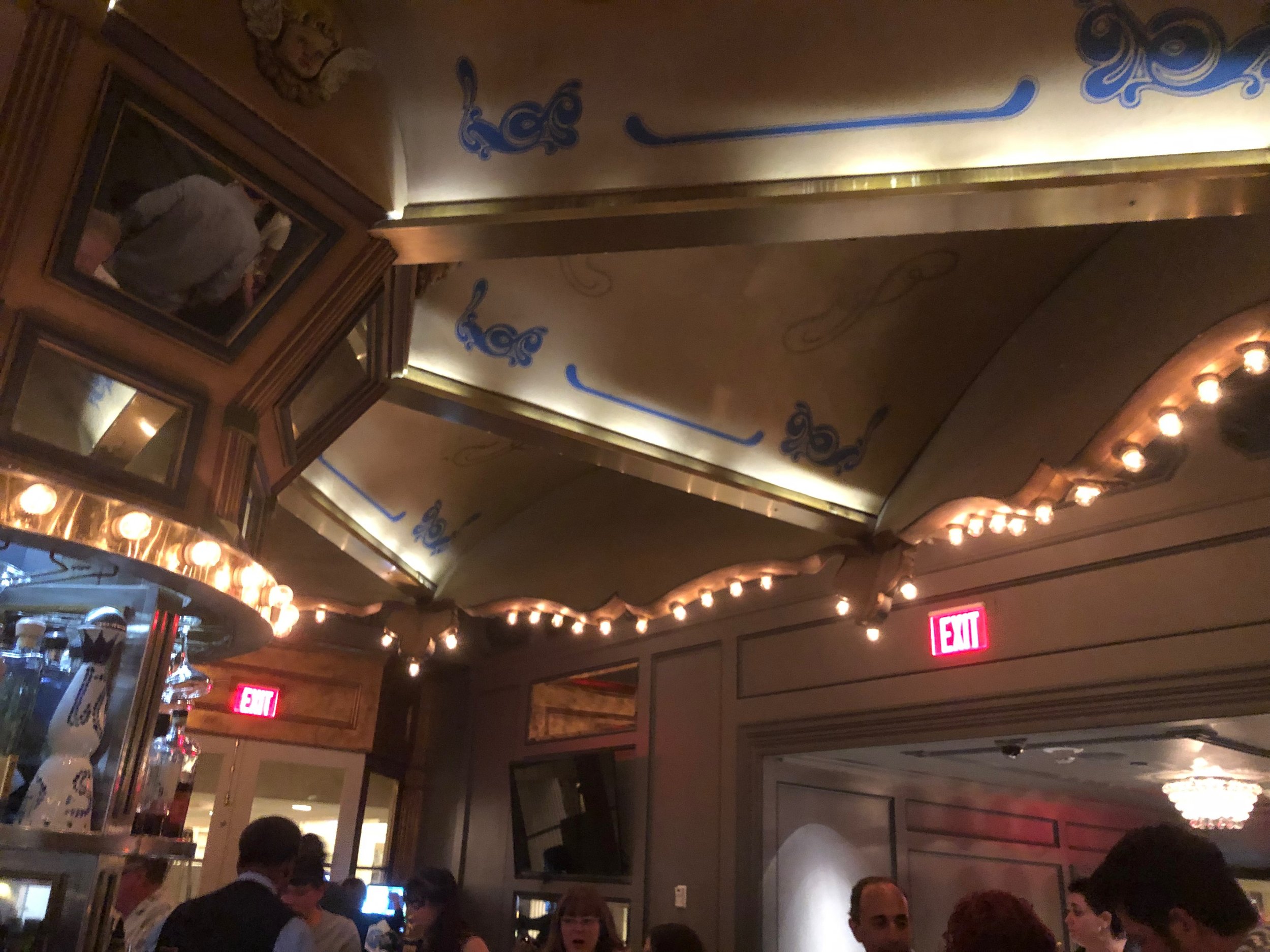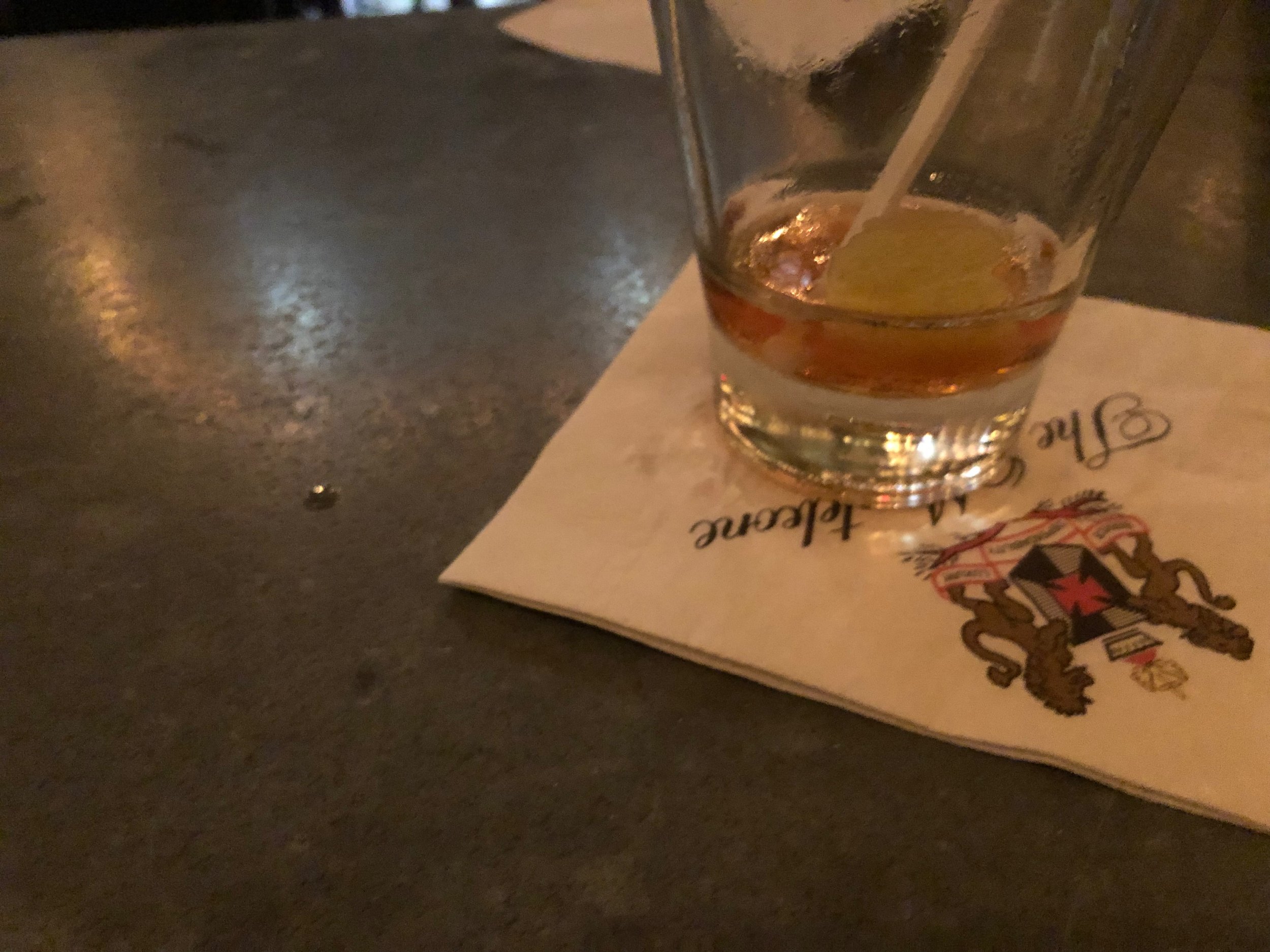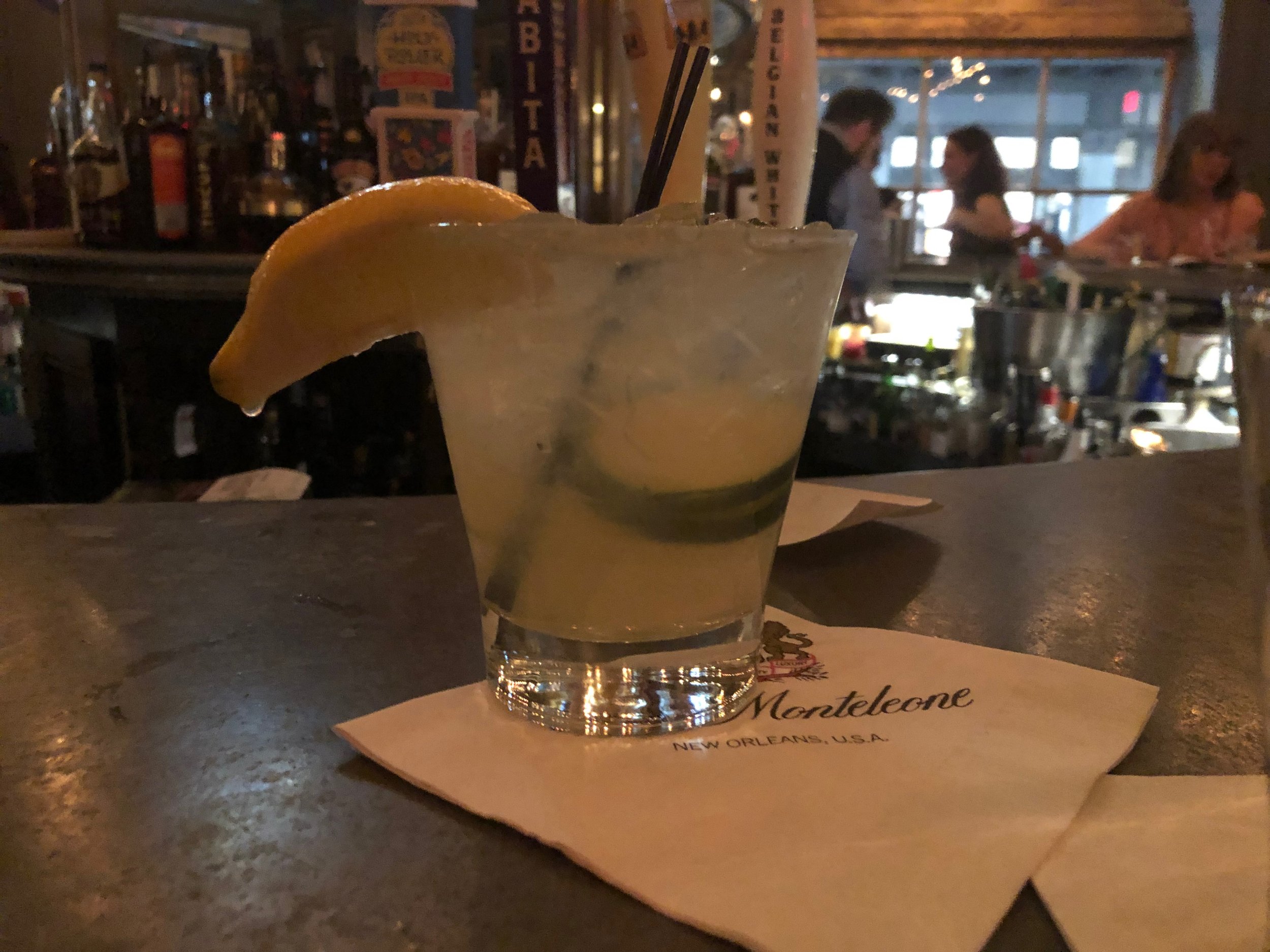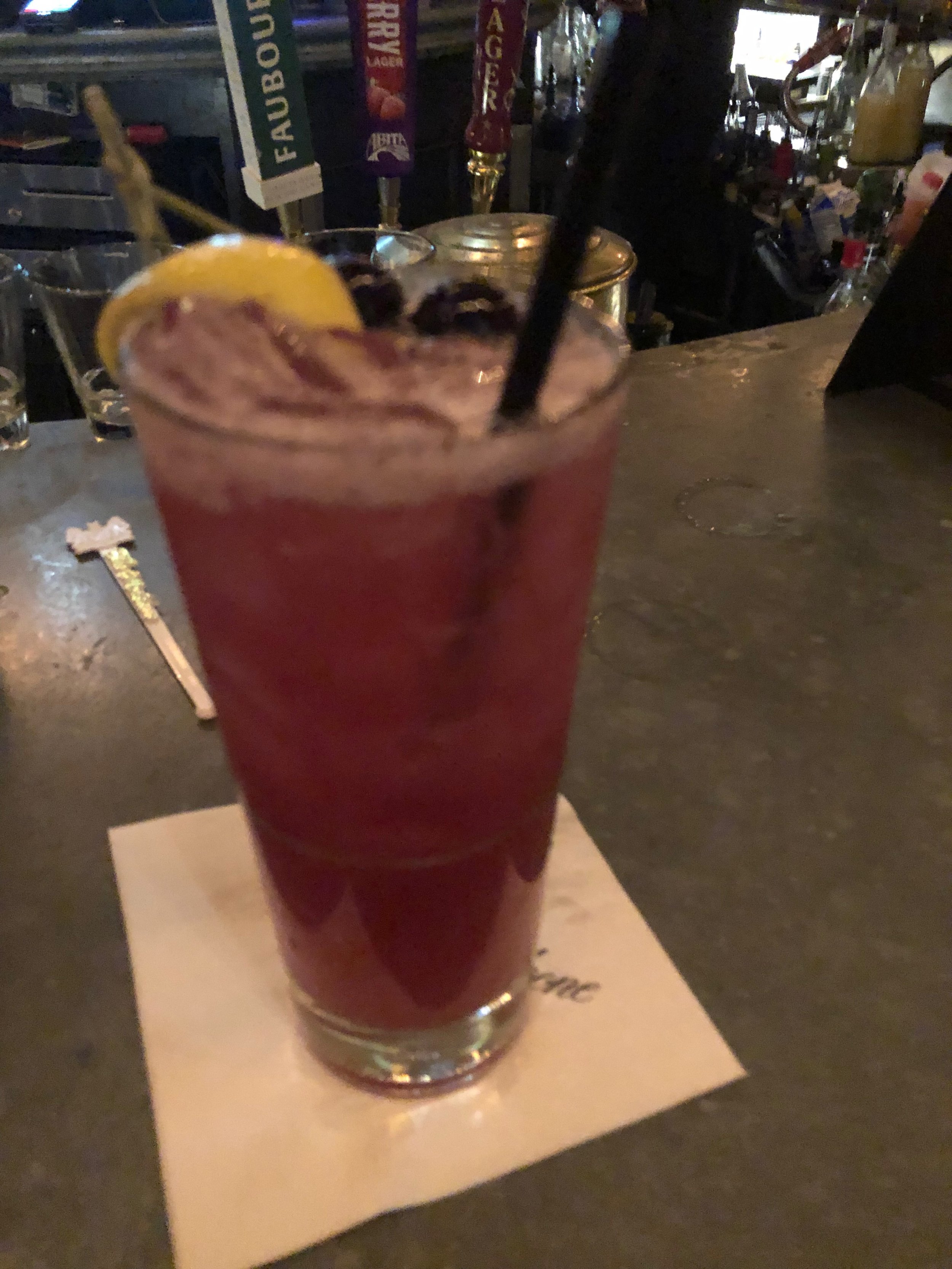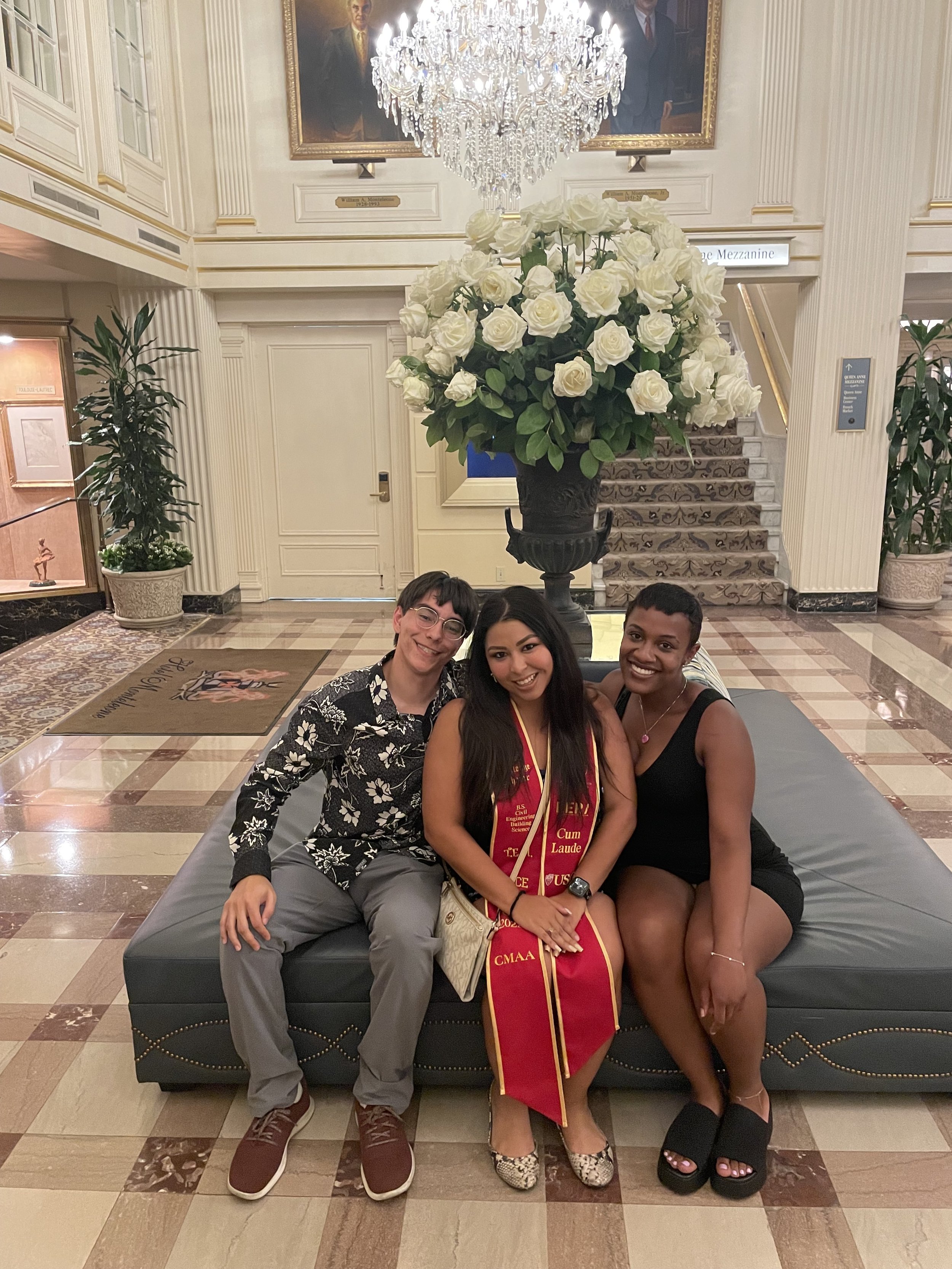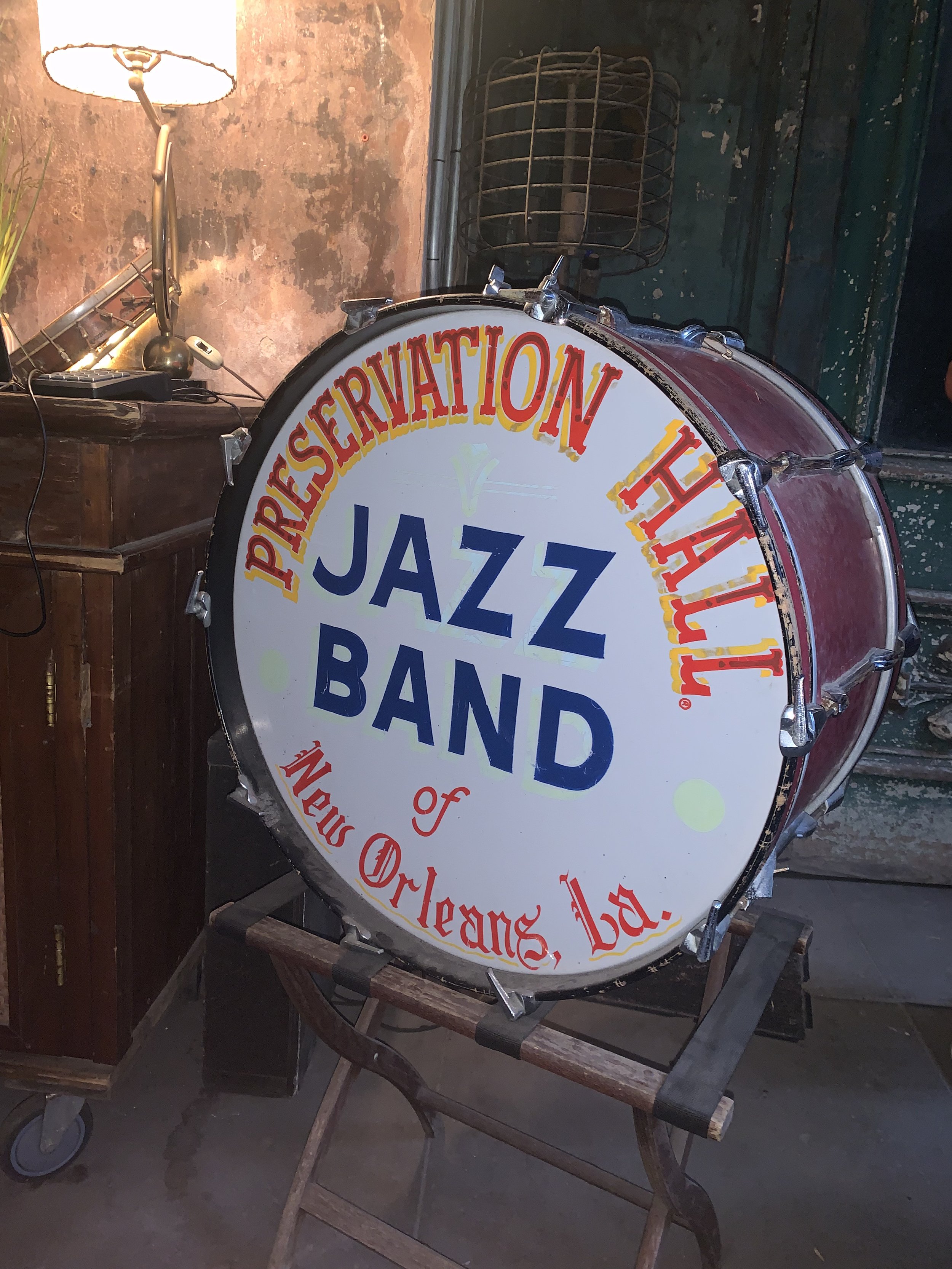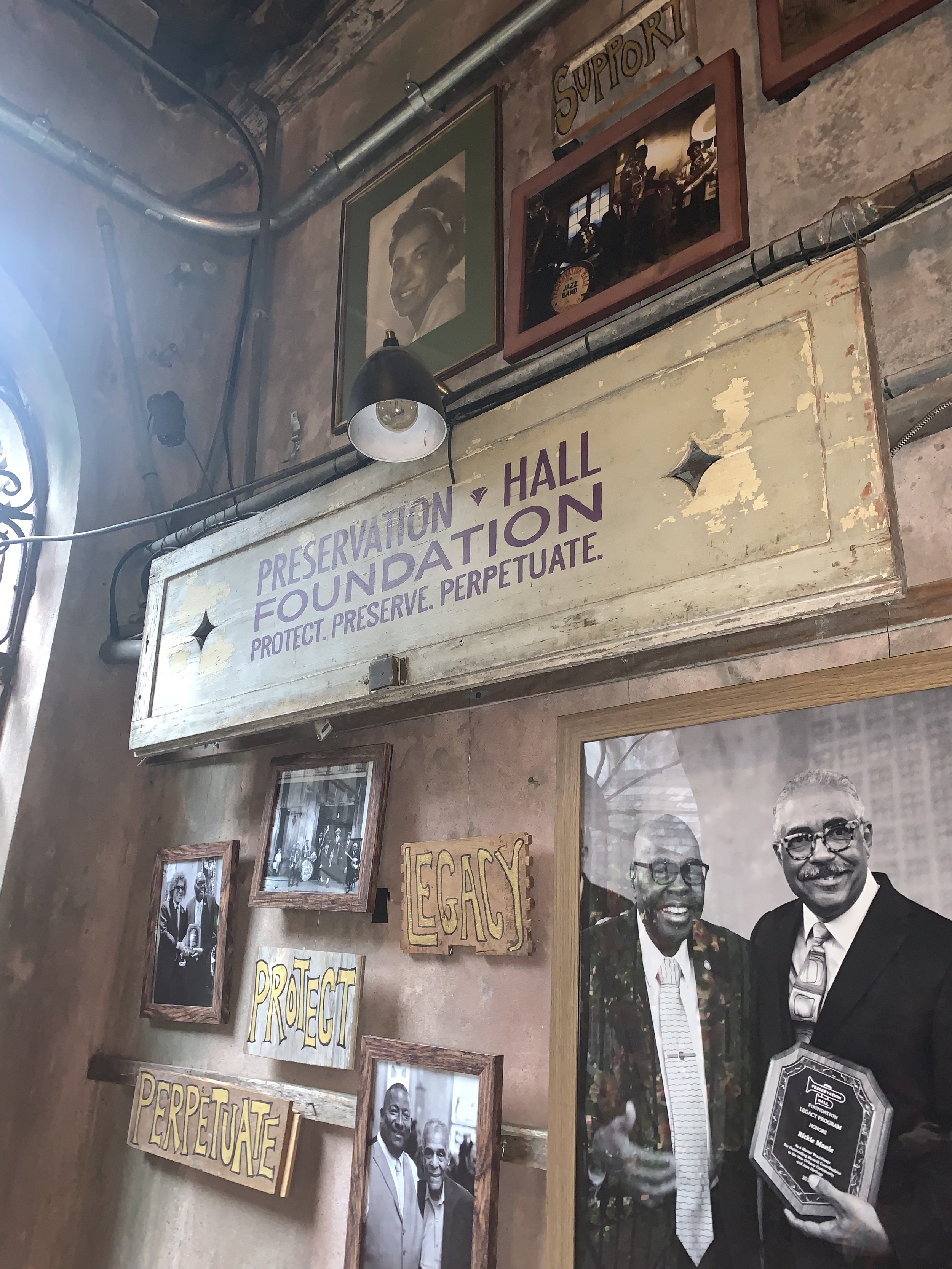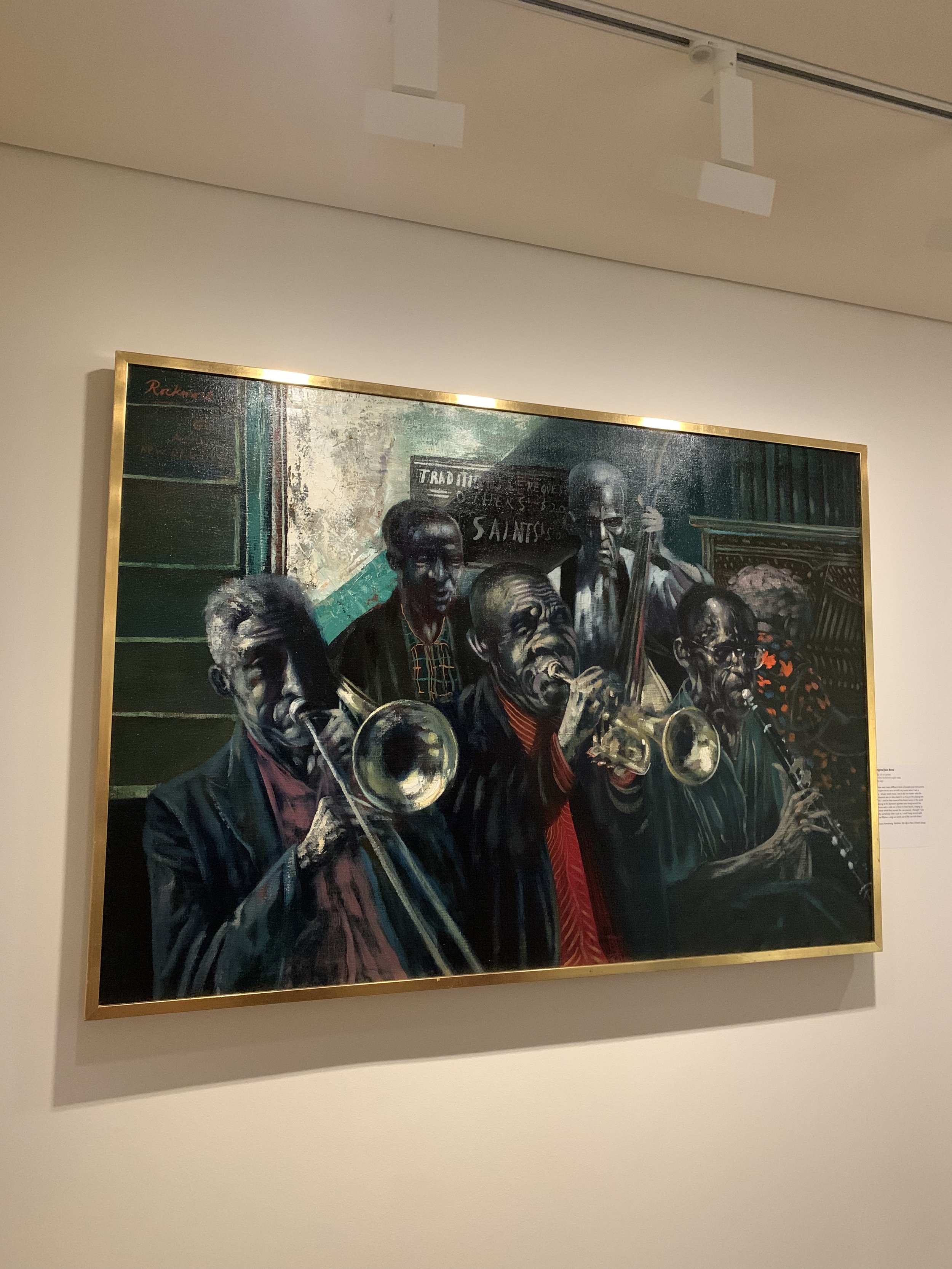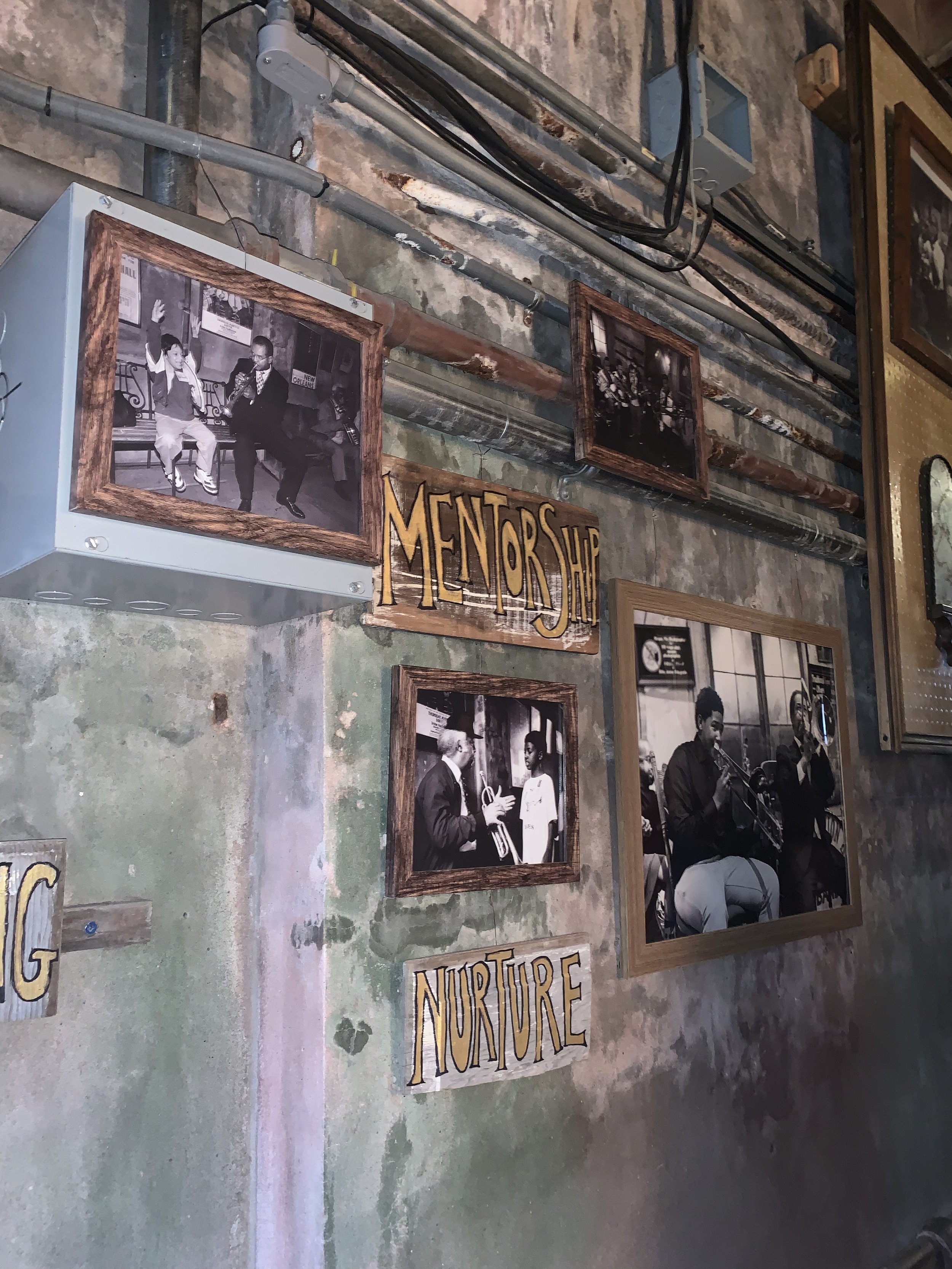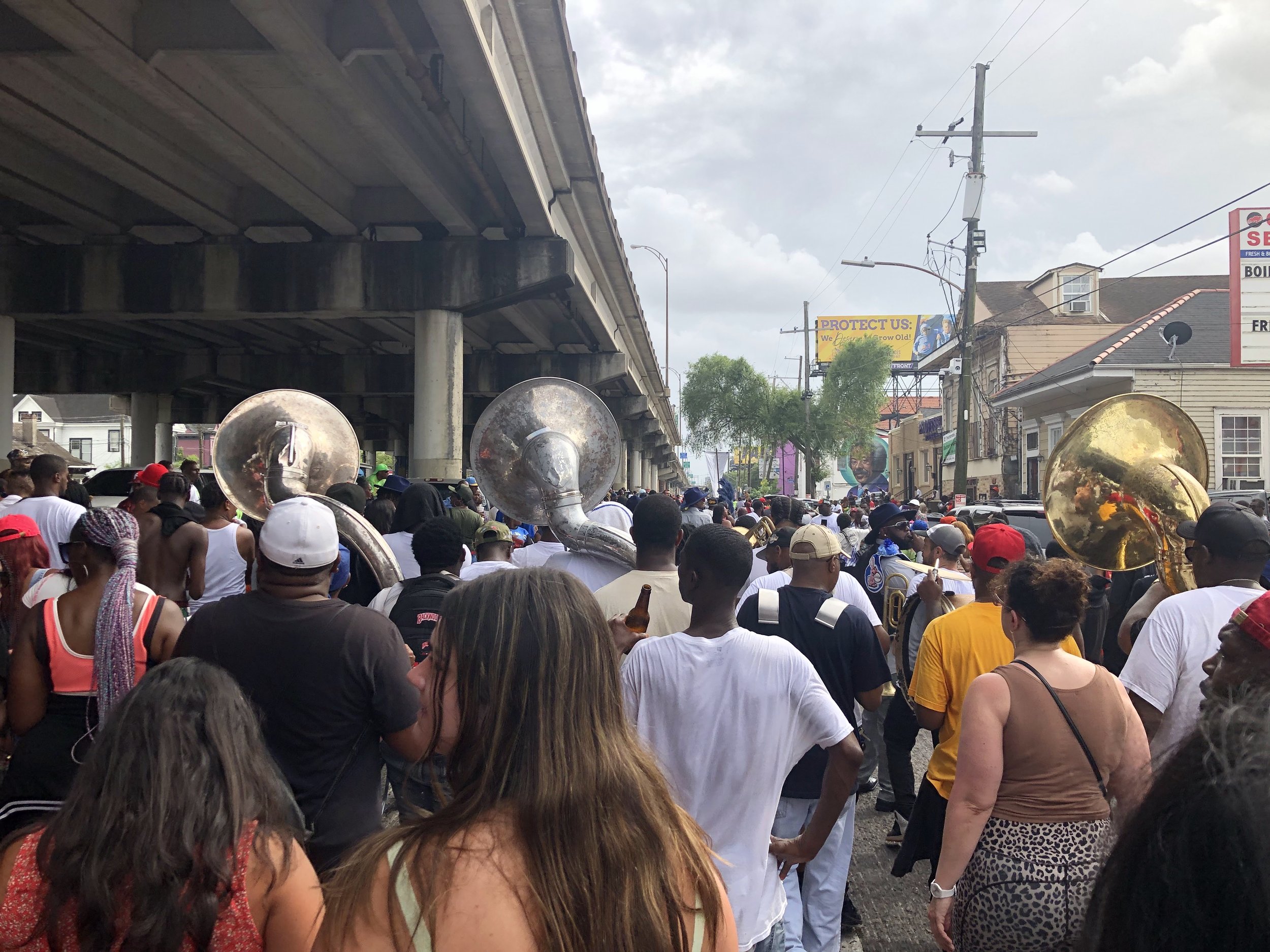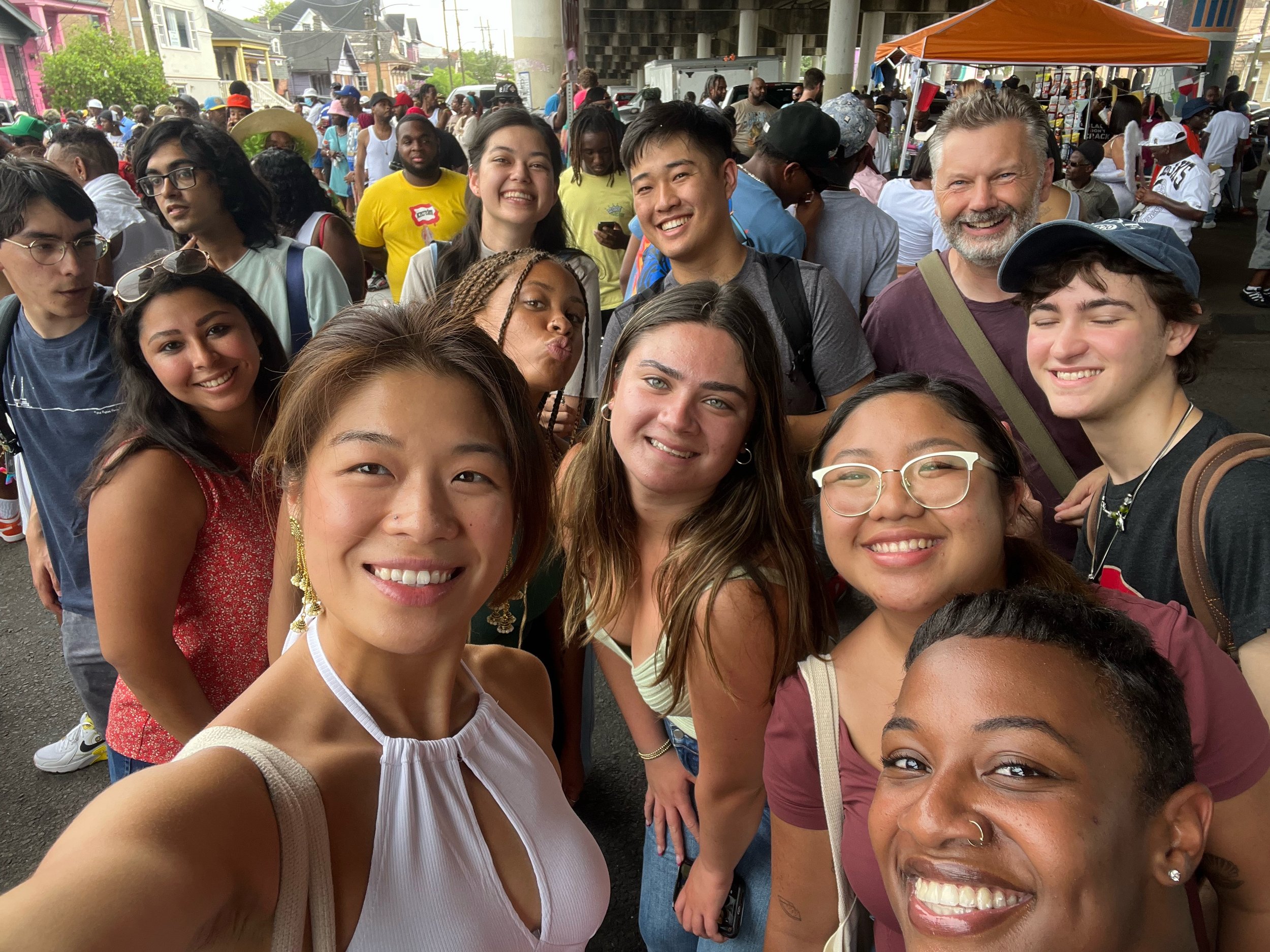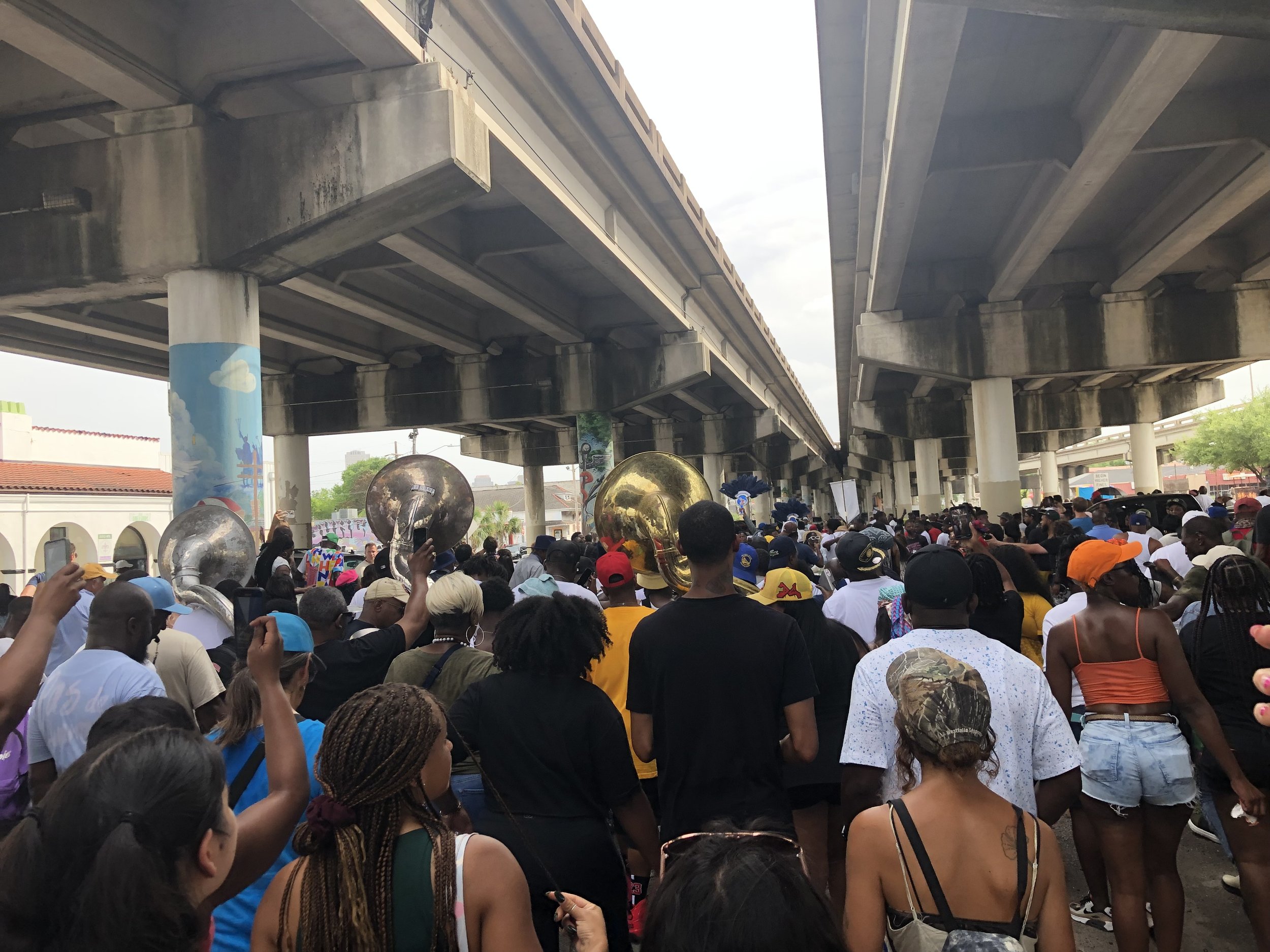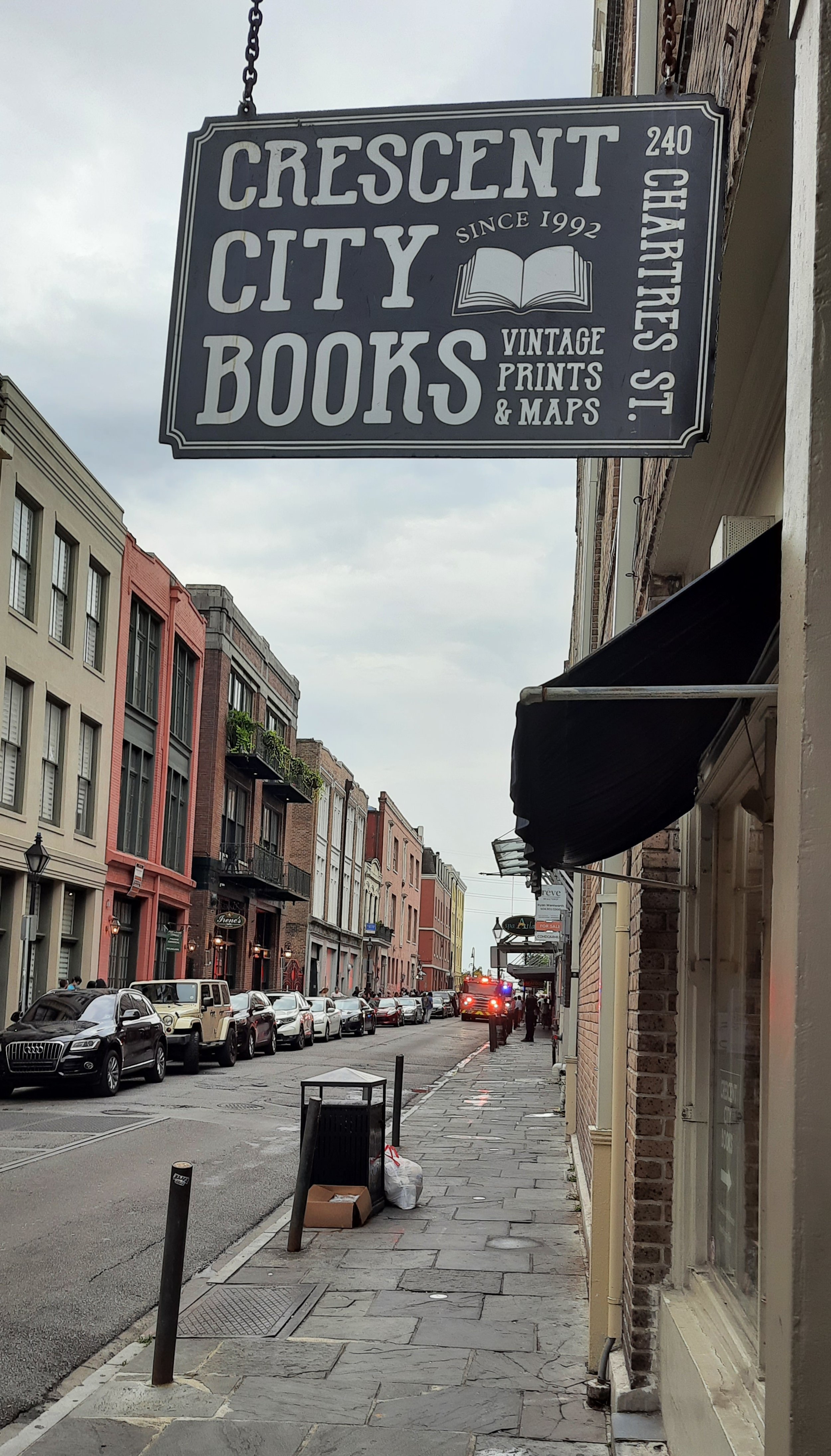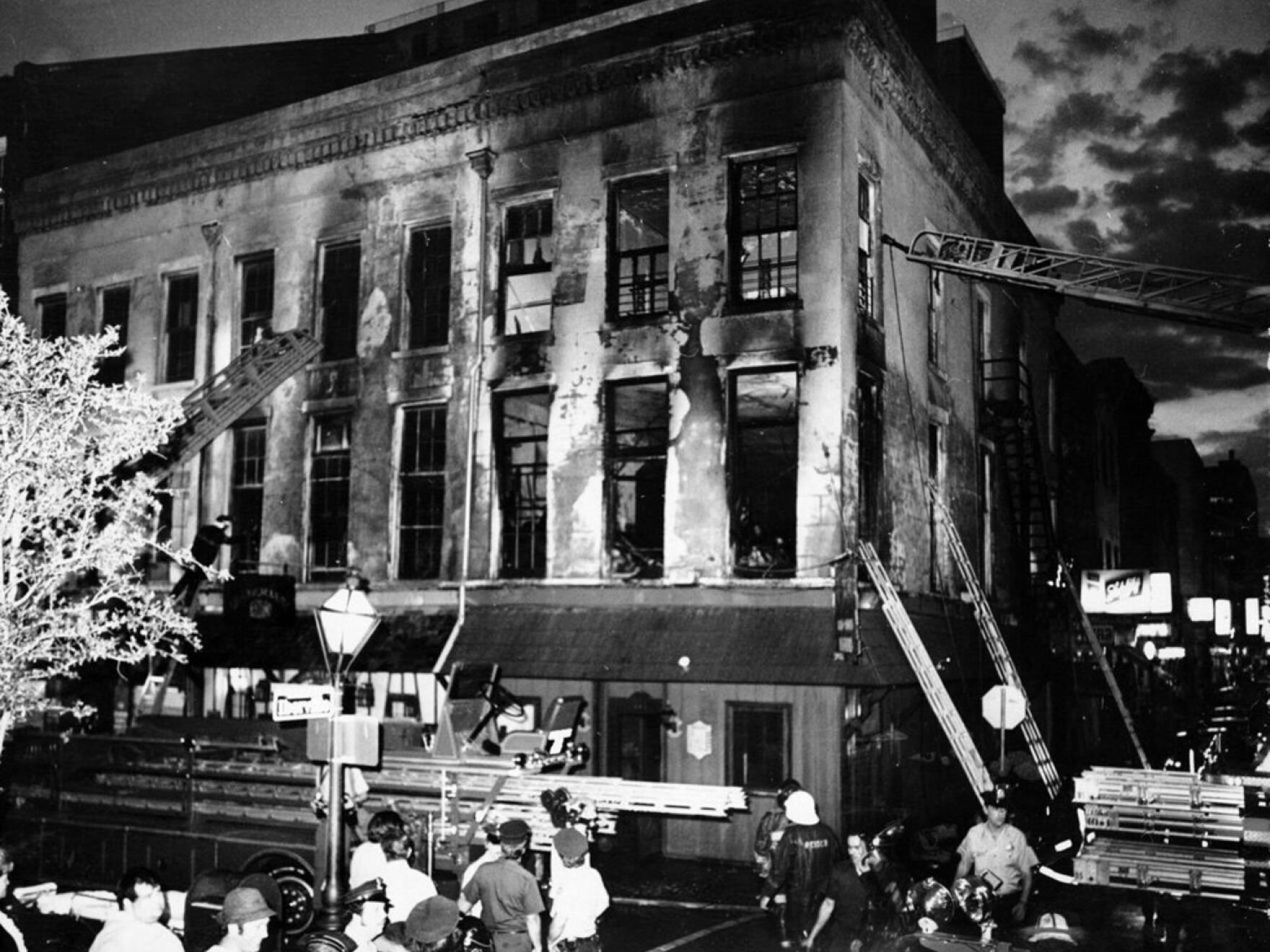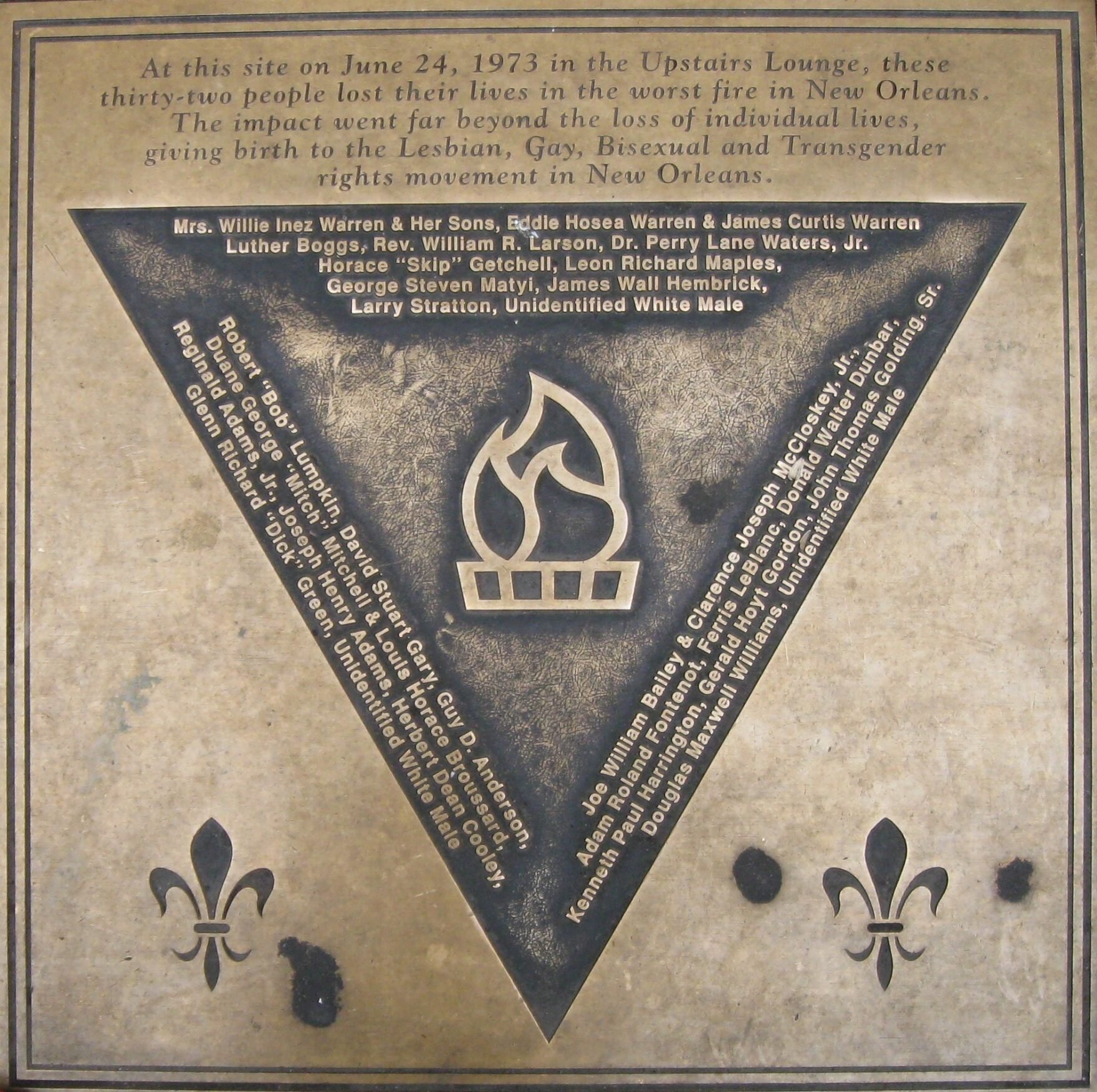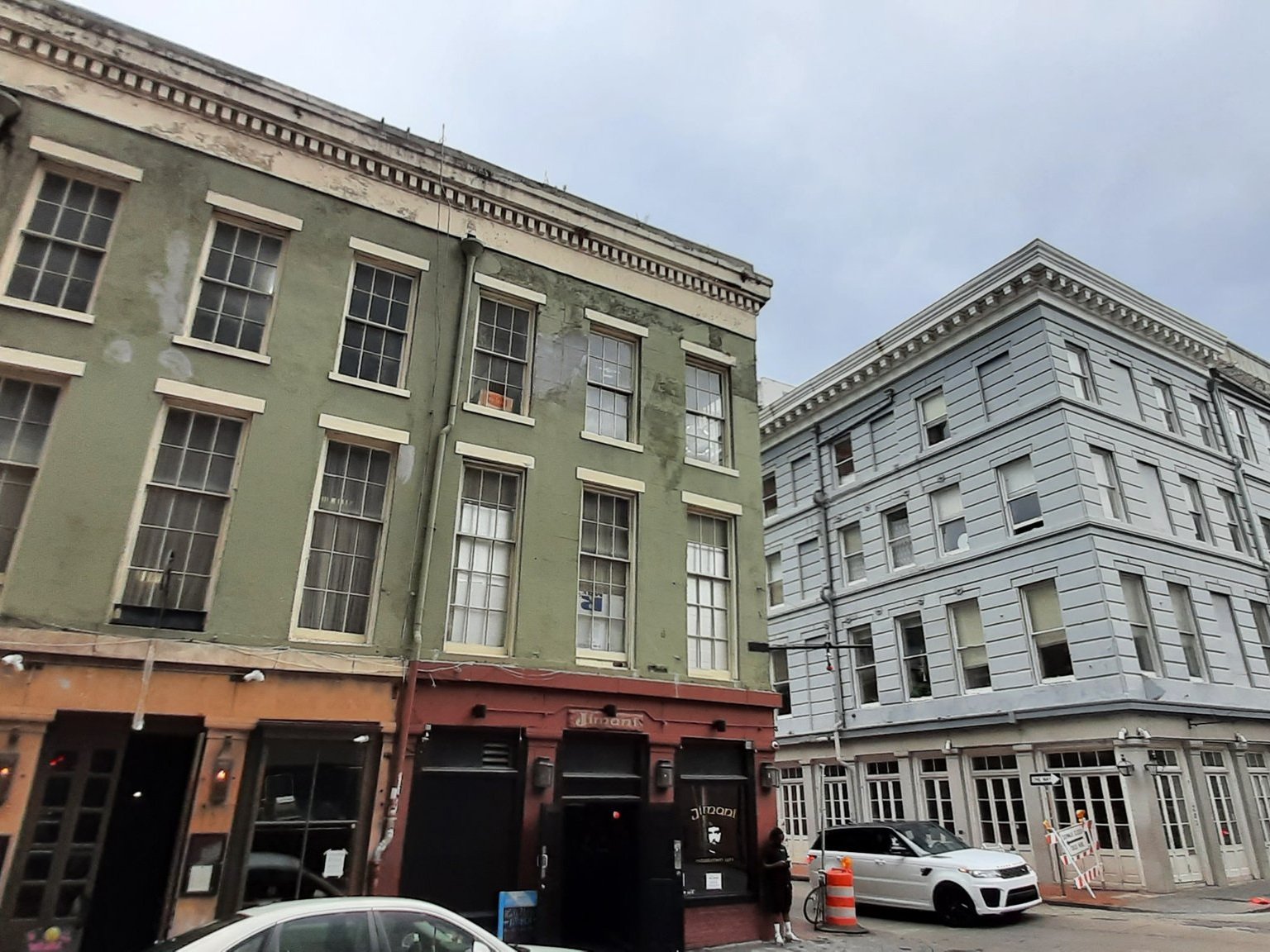When I told others that I was going to Louisiana for the month of May, I got many shocked reactions and questions about why I was going to the South. New Orleans is in the South, but in my mind, a city known for its license and exuberant extravagance didn’t really match up with the redneck reputation of the deep South. However, as we walked through the “genteel” districts surrounding New Orleans such as the Marigny, the stomping grounds of Binx Bolling, our protagonist in Walker Percy’s classic novel “The Moviegoer”, I began to gain some clarity and truly see the values and ideas that built up the Old South.
Seminar in Audubon Park
Last week, we did this exercise during our seminar time in which Andrew asked us to come up with a list of descriptors that came to mind when we thought of the South. Answers were hesitant at first, but as we got rolling, we came up with a list of adjectives and phrases that played into both ideas, stereotypes, and descriptors of the Old South. Some were positive: “etiquette, poise, strong beliefs, Southern hospitality” while others more negative: “oppression, knowing your place, racism.” Looking at all of these, one thing struck out to me more clearly than ever before—one’s belief and value system was a key component of the idea of the South.
Part of Binx’s personal search for meaning in The Moviegoer included looking for the moral codes that other people in his life lived by, and trying to see how others use them to find meaning in their lives. Two of the ones exemplified most clearly in the novel are religion, explored through his mother’s strong Catholic faith, and the idea of Southern honor and dignity, which is exemplified in his Aunt Emily’s pressing for Binx to live life with a sense of duty and honor. Aunt Emily’s values are clear when she talks to Binx, urging him “I wanted to pass on to you…a sense of duty, a nobility worn lightly… the only things that really matter in this life.” Binx seems to reject these all though, and seeks to find his own purpose through one of his favorite activities—movies, which act as a symbol of his search for meaning through others’ lives.
“More than anything I wanted to pass on to you the one heritage of the men of our family, a certain quality of spirit, a gaiety, a sense of duty, a nobility worn lightly, a sweetness, a gentleness with women—the only good things the South ever had and the only things that really matter in this life.”
As the title of the book suggests, Binx enjoys going to the movies not only for the fun of it and to escape daily life, but also as a search to better understand his own life. Even though the film itself Binx is sometimes critical of, he instead goes to the movie as an experience, saying “before I see a movie it is necessary for me to learn something about the theater or the people who operate it to touch base before going inside.” As a moviegoer, Binx watches the scenes of his life go by, confused and searching for meaning, but he continually returns to the theaters, holding onto the experience of the people he interacts with, the character’s stories he is able to watch, seeking an individual experience at the theaters, which subverts the conformity that American cinema tends to promote.
“If I did not talk to the theater owner or the ticket seller, I should be lost, cut loose metaphysically speaking. I should be seeing one copy of a film which might be shown anywhere and at any time. There is a danger of slipping clean out of space and time.”
As we discussed all these things under a grand old oak tree in Audubon Park in New Orleans, Andrew shared about how the book was deeply profound and beautiful for him, one man’s search for meaning and how at the end, he was able to be satisfied with the little things in life rather than the grandiose promises, riding off into the sunset ideas that movies tend to press. Similar to another book we read on this trip, many of my fellow bookpackers felt strongly about the ending, disliking the fact that Binx seemed to have settled for suburbia and married his cousin Kate after wild romps with his many secretaries, who he treats as substandard. Binx’s initial objectification of women highlights his lack of values and desire for pleasure. By the epilogue, though, Binx comes to the conclusion that “it is not a bad thing to settle for the Little Way” instead of the “big search for happiness”. Binx is now caring for both Kate and his half-siblings as a family man of sorts, indicating that while he may no longer be searching for this idea of a grand purpose in life, he has found pleasure in the small things that give him a life worth living.
There wasn’t a grand attraction or trip that really exemplified and brought the reading of The Moviegoer to life during our trip in New Orleans. Whereas other books had very physical and tangible experiences, the neighborhood in which the Moviegoer is set is quiet, the experience not particularly noteworthy in any way. And yet, I think that is deeply representative of Binx’s epilogue and the story which Walker Percy sets out to tell. There’s not always a hero, a fascinating and dynamic character who undergoes a daring adventure—rather, Binx is meant to be representative of the common people, a man of the world who could be like any other man searching for meaning.
It’s rather profound, the soul searching and reflection this book ponders, uncovering and journeying along Binx’s search to understand what it means to search for purpose. While it isn’t about faith or about Southern ideals of honor and dignity that his mother and Aunt Emily, who are representative of two traditional Southern values, Binx comes to find purpose with the people he’s with, taking care of his wife Kate and his half-siblings. And it’s in those little actions, that Little Way, that he is able to find meaning in mundanity.




























































